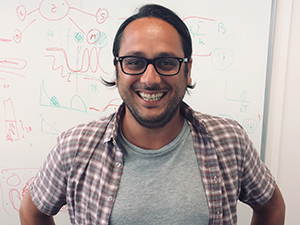Researchers have developed an artificial intelligence-based model that can help pathologists grade certain lung cancer tumours and predict patients’ outcomes. It does this by assessing the growth patterns in tumour samples, which can vary significantly among patients.
In a recent study, the grading achieved using the model, which is called ANORAK (pyrAmid pooliNg crOss stReam Attention networK), was predictive of disease-free survival (DFS). DFS is the length of time between treatment for lung adenocarcinoma – the most common type of non-small cell lung cancer (NSCLC) – and the return of signs or symptoms.
In the longer term, this model could help clinicians determine how best to treat each of their patients based on the likely progression of their cancer. Improved decision-making at the treatment stage could lead to better outcomes overall in this type of lung cancer. With recently introduced cancer screening programmes significantly increasing the identification of early-stage lung cancer, improving these treatment decisions is more urgent than ever before.
ANORAK was primarily created by scientists at The Institute of Cancer Research, London, with the work funded by a Cancer Research UK Career Establishment Award. The paper has been published in the journal Nature Cancer.
Challenges in tumour grading in lung adenocarcinoma
Lung adenocarcinoma will typically adopt one of six types of growth pattern, with a single tumour often combining multiple types. A global grading system known as the International Association for the Study of Lung Cancer (IASLC) system proposes that these growth patterns predict the extent to which a patient is at risk of disease progression or recurrence.
The combination of distinct pattern types that may appear within a tumour can make it difficult for pathologists to determine a person's outlook, as can the fact that the appearance of each type of pattern varies across a spectrum. The difficulties encountered in defining and quantifying the broad range of growth patterns means that different pathologists may not make the same decision when it comes to grading a tumour.
The risk of suboptimal or inconsistent grading by pathologists is that it leads to inadequate or inappropriate treatment for some patients, potentially putting them at risk of poorer outcomes.
Developing the deep learning model ANORAK
Although previous studies have applied deep learning models to the classification of growth patterns in lung adenocarcinoma, these models have not taken into account the detailed morphological structure of the patterns. What is more, they have not been able to provide automated IASLC grading.
In this study, the researchers developed an AI method, ANORAK, that was able to distinguish between the six types of lung adenocarcinoma growth pattern by assessing them at the pixel level. They applied it to 5,540 tumour samples on diagnostic slides, which came from a total of 1,372 people with the disease. The model was able to improve patient risk stratification, with patients identified as having IASLC grade 1 or 2 tumours having significantly longer DFS than those identified as having IASLC grade 3 tumours.
To further validate the ANORAK model, the team compared the information it provided with manual grading information from three pathologists. The AI grading was comparable with the pathologist grading across the board, even slightly outperforming it for one cohort of patients.
By referring to previous studies, the researchers were also able to show that the extent to which the AI and manual gradings agreed on the predominant growth pattern in a tumour was consistent with the level of agreement between different pathologists. Overall, the team concluded that AI grading added prognostic value, particularly in early-stage lung adenocarcinoma, where treatment decisions can be difficult.
In the second part of the study, the researchers considered four specific scenarios that pathologists might find particularly challenging. These included cases with four or more diagnostic slides per tumour and cases with highly diversified growth patterns. The ANORAK model performed well in each of the four scenarios, leading the team to conclude that their method could help pathologists grade growth patterns even when the case is more demanding than usual.
Finally, the researchers focused on the most common of the six growth patterns: the acinar pattern. Using ANORAK, they were able to achieve a better understanding of the shapes and structures of the acinar pattern. They also determined correlations between various acinar subtypes and different tumour characteristics, including some associated with a poor outlook.
Some achievements are only possible using AI
First author Dr Xiaoxi Pan, then a Postdoctoral Training Fellow in the Computational Pathology and Integrative Genomics Group at the Institute of Cancer Research (ICR), said:
“Diagnostic inaccuracies and variability among pathologists are longstanding issues in lung adenocarcinoma. Our study is the first to implement the IASLC grading system with an AI-powered tool and validate the prognostic values on two distinct cohorts.
“Our AI method enables the precise and automated quantification of unique growth patterns within a tumour, thereby inferring the predominant pattern and grading. It has also identified previously undiscovered morphological and spatial features of certain tissues that were not achievable using existing algorithms or human observations.”
Second author Dr Khalid Abdul Jabbar, who was a postdoc in the same group at the ICR at the time, said:
“We were delighted that our AI method not only matched but also consistently enhanced the prognostic value of grading in early-stage tumours, including in challenging scenarios. Its capability to identify high-risk tumours could aid the selection of patients for additional treatment in a reproducible manner, free from variability among observers.
“Additionally, in the research setting, it has the potential to integrate with genetic data, which could lead to new biotechnical tools and deeper insights into tumour evolution.”
The researchers have already planned further studies to incorporate genetic data into their work, with the aim of better understanding how tumours progress and how this is influenced by the cells and tissues surrounding them. The team will also be trialling ANORAK in larger groups of people with early-stage lung adenocarcinoma to provide further evidence of its effectiveness.
.tmb-propic-md.jpg?Culture=en&sfvrsn=c25d2b2f_9)
 .
.
